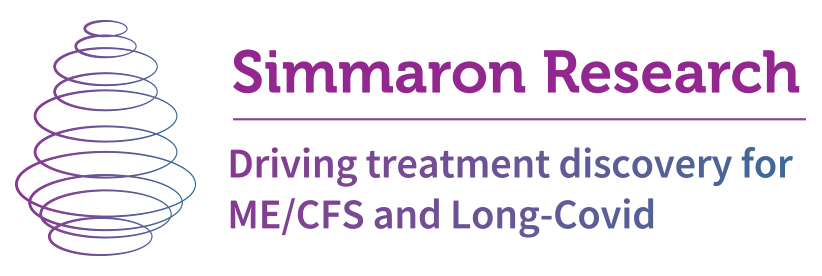Simmaron's Fifth Anniversary Event Updates ME/CFS Community on Dynamic Research Underway
 Simmaron recently held a patient update session with its Scientific Advisory Board and key collaborators in Incline Village, Nevada. The event celebrated the Simmaron Research Foundation's fifth year anniversary. I don't know if anyone would have predicted five years ago that patients would be hearing from the likes of Mady Hornig, Maureen Hanson, Konstance Knox and Elizabeth Unger but here they were in little Incline Village talking about their work.
Simmaron recently held a patient update session with its Scientific Advisory Board and key collaborators in Incline Village, Nevada. The event celebrated the Simmaron Research Foundation's fifth year anniversary. I don't know if anyone would have predicted five years ago that patients would be hearing from the likes of Mady Hornig, Maureen Hanson, Konstance Knox and Elizabeth Unger but here they were in little Incline Village talking about their work.
CDC Collaboration
The surprise guest at the event was Elizabeth Unger. Dr. Unger was a fitting guest at the Simmaron's 5th year anniversary meeting; it's been, after all, just over five years since she took over the helm of CDC's Chronic Fatigue Syndrome (ME/CFS) program. Who would have thought five years ago that the head of CDC's CFS program would show up at a Simmaron information meeting.Certainly not Dr. Peterson. About five years ago I asked him if the CDC had ever shown interest in his work, and he just laughed. His relationship with the CDC was frosty to say the least. That's not true any longer.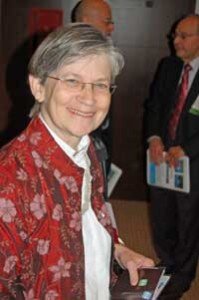 Under Dr. Reeves, the CDC developed a definition in-house that received zero support from researchers (and patients). Under Dr. Unger, the CDC has made ME/CFS experts a core feature of its work, is meeting with patient groups, has worked with CFSAC on its website, and is engaging with patients and experts in its educational materials.Instead of a stumbling block, Dr. Unger turned out to be a collaborator who's committed an enormous amount of time, energy and her (limited) budget to learning about ME/CFS doctors and their patients. What a shift that has been.Dr. Unger threw all the definitions out the window in the multisite ME/CFS expert study. Realizing that doctors, most of whom had decades of experience in this disease, were a better source of what ME/CFS was than any definition, she cleared the decks; anyone the expert doctors believed had ME/CFS, whether they met x or y definition or not, she would study. They were, by default, ME/CFS patients. Dr. Peterson thought it was a brilliant move.At Dr. Peterson's invitation, Dr. Unger stayed following a routine site visit to hear the presentations from Simmaron's Scientific Board and attend the patient gathering. At the patient meeting she had some good news; the first paper from the ME/CFS experts multisite study was finally under review for publication.It had been a long time coming. Simmaron and Dr. Peterson are already deeply immersed in the greatly expanded second phase of the trial, and had just gotten a contract for the third phase of the study. The study was already slated to continue at least into 2017 and now will continue further.This now immense study involving over 800 patients and controls will surely supplant the infamous PACE trial as the largest and longest ME/CFS study ever done. With a third phase slated to begin shortly, it's going to provide an unprecedented look at a very large group of ME/CFS patients, and how they are tested and treated by doctors over time.Dr. Unger quickly went over a few of the highlights; the greatest heterogeneity, surprisingly, was found within the ME/CFS expert’s sites, not between them. By and large, the practitioners are not seeing different kinds of patients; instead each is seeing a similarly wide variety of patients. How wide? The standard functional tests being done, for instance, indicate that some people with ME/CFS experience high rates of pain while others experience no pain at all.The constant is that ME/CFS is producing high reductions in vitality and physical functioning but has relatively little effect on mental or emotional functioning. Dr. Unger said the multisite studies will go a long way to helping the public understand how severe a disease ME/CFS is.
Under Dr. Reeves, the CDC developed a definition in-house that received zero support from researchers (and patients). Under Dr. Unger, the CDC has made ME/CFS experts a core feature of its work, is meeting with patient groups, has worked with CFSAC on its website, and is engaging with patients and experts in its educational materials.Instead of a stumbling block, Dr. Unger turned out to be a collaborator who's committed an enormous amount of time, energy and her (limited) budget to learning about ME/CFS doctors and their patients. What a shift that has been.Dr. Unger threw all the definitions out the window in the multisite ME/CFS expert study. Realizing that doctors, most of whom had decades of experience in this disease, were a better source of what ME/CFS was than any definition, she cleared the decks; anyone the expert doctors believed had ME/CFS, whether they met x or y definition or not, she would study. They were, by default, ME/CFS patients. Dr. Peterson thought it was a brilliant move.At Dr. Peterson's invitation, Dr. Unger stayed following a routine site visit to hear the presentations from Simmaron's Scientific Board and attend the patient gathering. At the patient meeting she had some good news; the first paper from the ME/CFS experts multisite study was finally under review for publication.It had been a long time coming. Simmaron and Dr. Peterson are already deeply immersed in the greatly expanded second phase of the trial, and had just gotten a contract for the third phase of the study. The study was already slated to continue at least into 2017 and now will continue further.This now immense study involving over 800 patients and controls will surely supplant the infamous PACE trial as the largest and longest ME/CFS study ever done. With a third phase slated to begin shortly, it's going to provide an unprecedented look at a very large group of ME/CFS patients, and how they are tested and treated by doctors over time.Dr. Unger quickly went over a few of the highlights; the greatest heterogeneity, surprisingly, was found within the ME/CFS expert’s sites, not between them. By and large, the practitioners are not seeing different kinds of patients; instead each is seeing a similarly wide variety of patients. How wide? The standard functional tests being done, for instance, indicate that some people with ME/CFS experience high rates of pain while others experience no pain at all.The constant is that ME/CFS is producing high reductions in vitality and physical functioning but has relatively little effect on mental or emotional functioning. Dr. Unger said the multisite studies will go a long way to helping the public understand how severe a disease ME/CFS is.
Konstance Knox
Konstance Knox, PhD, is collaborating with Simmaron on her insect infection study at Coppe Healthcare. She posited the interesting idea of ME/CFS having a similar trajectory to Lyme Disease. Lyme Disease,she noted, first showed up in pediatrician’s offices in children with arthritis in Old Lyme, Connecticut in the 1970's. Eventually the children were found to be infected with bacteria carried by ticks. ME/CFS patients have been showing up in doctor’s offices with unexplained fatigue, post-exertional malaise, pain and debilitating symptoms for years. Could a similar scenario prevail for at least a subset of ME/CFS patients? Knox thinks it might. Her large study, using samples from 300 ME/CFS and healthy controls gathered in the NIH's XMRV study, is looking for evidence of pathogens that aren't always tested for in chronic fatigue syndrome (ME/CFS). They include three different kinds of Borrelia bacteria, the Powassan and Dengue viruses, and the most widespread insect borne disease in the U.S., West Nile Virus.Each demonstrates how rapidly insect borne pathogens can invade a country. Borrelia was identified as the cause of Lyme in 1981, and according to one estimate, is believed to effect 300,000 people a year. West Nile Virus was first found in New York in 1999 and has spread across the country. Now the Zika virus is beginning to touch upon our southern shores in Florida as well.In Dr. Knox’s mind, the Powassan virus is the big mystery. Carried by the same ticks that cause Lyme disease, Powassan is similar to tick-borne encephalitis virus which has long been shown to cause serious illnesses in Eurasia.Unlike the Lyme bacteria, which needs the tick to be attached for quite some time for the bacteria to get transmitted, the Powassan virus can be transmitted in just 15 minutes. Knox found that 11% of the 2,000 ticks she studied in Wisconsin carried Lyme disease and 6% carried the Powassan virus. She found 55% of people infected with Lyme disease also were infected with the Powassan virus.Dr. Knox's preliminary data of ME/CFS patients with an acute flu-like onset found a low incidence of Lyme disease (3%) but a pretty high incidence (11%) of people who had antibodies which looked like they might be to TBEV; i.e. the Powassan virus. The NIH samples offer an opportunity to study these infections in well characterized patients and controls from multiple clinical sites.
ME/CFS patients have been showing up in doctor’s offices with unexplained fatigue, post-exertional malaise, pain and debilitating symptoms for years. Could a similar scenario prevail for at least a subset of ME/CFS patients? Knox thinks it might. Her large study, using samples from 300 ME/CFS and healthy controls gathered in the NIH's XMRV study, is looking for evidence of pathogens that aren't always tested for in chronic fatigue syndrome (ME/CFS). They include three different kinds of Borrelia bacteria, the Powassan and Dengue viruses, and the most widespread insect borne disease in the U.S., West Nile Virus.Each demonstrates how rapidly insect borne pathogens can invade a country. Borrelia was identified as the cause of Lyme in 1981, and according to one estimate, is believed to effect 300,000 people a year. West Nile Virus was first found in New York in 1999 and has spread across the country. Now the Zika virus is beginning to touch upon our southern shores in Florida as well.In Dr. Knox’s mind, the Powassan virus is the big mystery. Carried by the same ticks that cause Lyme disease, Powassan is similar to tick-borne encephalitis virus which has long been shown to cause serious illnesses in Eurasia.Unlike the Lyme bacteria, which needs the tick to be attached for quite some time for the bacteria to get transmitted, the Powassan virus can be transmitted in just 15 minutes. Knox found that 11% of the 2,000 ticks she studied in Wisconsin carried Lyme disease and 6% carried the Powassan virus. She found 55% of people infected with Lyme disease also were infected with the Powassan virus.Dr. Knox's preliminary data of ME/CFS patients with an acute flu-like onset found a low incidence of Lyme disease (3%) but a pretty high incidence (11%) of people who had antibodies which looked like they might be to TBEV; i.e. the Powassan virus. The NIH samples offer an opportunity to study these infections in well characterized patients and controls from multiple clinical sites.
Dr. Mady Hornig
The Hornig/Lipkin team at Columbia's Center for Infection and Immunity (CII) isn’t just looking at ME/CFS to understand the disease. It’s mining clues from a wide range of disorders - from autism to narcolepsy - to try to understand the disease processes that are occurring. They believe the "omics" revolution - which attempts to understand diseases in terms of their genomics, proteomics, metabolomics (and probably other "omics") - holds the key to understanding and finding the subsets present in ME/CFS.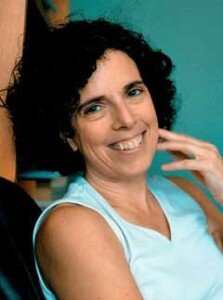 Until they get to a cause, Dr. Hornig is unwilling to rule out any possibilities. ME/CFS could be caused by an immune response to a wide range of pathogens (which may be present or not) or to an as yet undiscovered agent. That statement suggested that Dr. Hornig doesn’t consider the earlier CII study which found little or no evidence of pathogens to be the end of the story.Of course few researchers have looked in the tissues. Dr Chia believes he's found enteroviruses and Dr. Duffy herpesviruses in the gut tissues of ME/CFS and/or fibromyalgia patients. Hornig and Lipkin have looked in the blood but they're also raising money to do analyses of the flora in the stool and saliva over time. (Check out the Microbe Discovery Project for more.) Plus, as we've seen, a Simmaron/Konstance Knox project is looking for evidence of insect borne illnesses that have not been tested for before.If pathogens are involved, the heterogeneity in the disease could reflect genetic differences in how each person responded to them, how old the person was when the infection occurred, the state of each person's microbiome at the time, etc. The take-away message was that different symptoms don’t necessarily mean different diseases.The CII is doing a lot, but Dr. Hornig started out by focusing on a hot topic these days - metabolomics. The CII team believes that metabolomics may provide the link between what's happening in the microbiome and the rest of the body. Metabolomics uncovers the breakdown products of metabolism. If a substance, say tryptophan is not being metabolized properly in the gut, it can leave a metabolic signature in the blood that can be picked by metabolomics tests. From the blood it’s apparently a pretty straight shot to the brain.Marrying gut (microbiome) and blood (metabolomics) data would be the cat's meow, and it's begun to happen. Several small studies have been able to link altered gut bacteria to the presence of gut metabolites in the blood. A small Solve ME/CFS Initiative study carried that idea one step forward by adding exercise to the mix. It suggested that exercise could, probably by increasing leaky gut issues, result in increased levels of gut metabolites in the blood.Dr. Hornig believes that aberrant tryptophan metabolism in the gut could provide a major clue for ME/CFS patients. These metabolic by-products have already been associated with several neurological diseases and are known to cause symptoms similar to those found in chronic fatigue syndrome (ME/CFS). If she finds problems with tryptophan metabolism in the gut and then can pick up their metabolic by products in the patient's blood she can make a strong case for a gut-brain connection in ME/CFS.While she was at it, she also noted that these bacteria can affect NAD+ and energy production. To sum up, Dr. Hornig is gathering data on a process that could be affecting cognition, the gut and energy production in ME/CFS.No Mady Hornig talk it seems is complete without an emotional moment. Every event I’ve seen her at has left her and others in tears at some point, and it happened again. I watched an older gentleman come over and clasp her hands. Five minutes later there they were hugging each other and sobbing away.Top Poop Crew
Until they get to a cause, Dr. Hornig is unwilling to rule out any possibilities. ME/CFS could be caused by an immune response to a wide range of pathogens (which may be present or not) or to an as yet undiscovered agent. That statement suggested that Dr. Hornig doesn’t consider the earlier CII study which found little or no evidence of pathogens to be the end of the story.Of course few researchers have looked in the tissues. Dr Chia believes he's found enteroviruses and Dr. Duffy herpesviruses in the gut tissues of ME/CFS and/or fibromyalgia patients. Hornig and Lipkin have looked in the blood but they're also raising money to do analyses of the flora in the stool and saliva over time. (Check out the Microbe Discovery Project for more.) Plus, as we've seen, a Simmaron/Konstance Knox project is looking for evidence of insect borne illnesses that have not been tested for before.If pathogens are involved, the heterogeneity in the disease could reflect genetic differences in how each person responded to them, how old the person was when the infection occurred, the state of each person's microbiome at the time, etc. The take-away message was that different symptoms don’t necessarily mean different diseases.The CII is doing a lot, but Dr. Hornig started out by focusing on a hot topic these days - metabolomics. The CII team believes that metabolomics may provide the link between what's happening in the microbiome and the rest of the body. Metabolomics uncovers the breakdown products of metabolism. If a substance, say tryptophan is not being metabolized properly in the gut, it can leave a metabolic signature in the blood that can be picked by metabolomics tests. From the blood it’s apparently a pretty straight shot to the brain.Marrying gut (microbiome) and blood (metabolomics) data would be the cat's meow, and it's begun to happen. Several small studies have been able to link altered gut bacteria to the presence of gut metabolites in the blood. A small Solve ME/CFS Initiative study carried that idea one step forward by adding exercise to the mix. It suggested that exercise could, probably by increasing leaky gut issues, result in increased levels of gut metabolites in the blood.Dr. Hornig believes that aberrant tryptophan metabolism in the gut could provide a major clue for ME/CFS patients. These metabolic by-products have already been associated with several neurological diseases and are known to cause symptoms similar to those found in chronic fatigue syndrome (ME/CFS). If she finds problems with tryptophan metabolism in the gut and then can pick up their metabolic by products in the patient's blood she can make a strong case for a gut-brain connection in ME/CFS.While she was at it, she also noted that these bacteria can affect NAD+ and energy production. To sum up, Dr. Hornig is gathering data on a process that could be affecting cognition, the gut and energy production in ME/CFS.No Mady Hornig talk it seems is complete without an emotional moment. Every event I’ve seen her at has left her and others in tears at some point, and it happened again. I watched an older gentleman come over and clasp her hands. Five minutes later there they were hugging each other and sobbing away.Top Poop Crew While on the microbiome she noted, with a smile, that of all the groups they were working with, Simmaron was the best poop collector; Dr. Peterson gathered more stool samples (hundreds of them apparently) from more patients than any other doctor they were working with. (Go Simmaron :))
While on the microbiome she noted, with a smile, that of all the groups they were working with, Simmaron was the best poop collector; Dr. Peterson gathered more stool samples (hundreds of them apparently) from more patients than any other doctor they were working with. (Go Simmaron :))
Maureen Hanson
Maureen Hanson, PhD, presented some interesting news recently when she announced during an SMCI webinar that her small metabolomics had duplicated the Naviaux study's core finding that ME/CFS was a disorder of reduced metabolism; i.e. it's a hypometabolic disorder.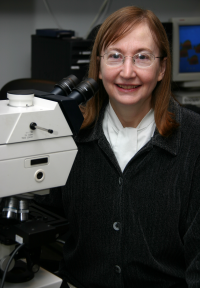 That finding helps us understand her Simmaron talk a bit better. Hanson explored the subset question more deeply than anyone I've seen before. Chronic fatigue syndrome (ME/CFS), she said, could be a bunch of different diseases, or one core pathology could be driving it.Whatever it is, the diversity of symptoms found in the disease has produced a credibility problem because diseases which produce lots of symptoms have long been considered "psychosomatic". The many different triggers ME/CFS and outbreaks has been associated with, and the many different bodily systems it effects, have been confusing as well.Hanson thought it was intriguing that the symptom presentations seen in different locales appears to be similar! If ME was the result of different agents producing different diseases in different places then the locales should look very different but they don't. Hanson then fished out a bevy of factors which could affect symptom pre
That finding helps us understand her Simmaron talk a bit better. Hanson explored the subset question more deeply than anyone I've seen before. Chronic fatigue syndrome (ME/CFS), she said, could be a bunch of different diseases, or one core pathology could be driving it.Whatever it is, the diversity of symptoms found in the disease has produced a credibility problem because diseases which produce lots of symptoms have long been considered "psychosomatic". The many different triggers ME/CFS and outbreaks has been associated with, and the many different bodily systems it effects, have been confusing as well.Hanson thought it was intriguing that the symptom presentations seen in different locales appears to be similar! If ME was the result of different agents producing different diseases in different places then the locales should look very different but they don't. Hanson then fished out a bevy of factors which could affect symptom pre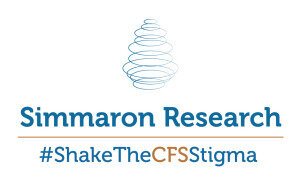 sentation; the age at which ME/CFS occurred, gender, genetic background, co-infections present, pathogen variations, treatments tried, degree of exercise attempted - all of these could conceivably tweak one disease into producing different symptoms. (Consider what happens to some people who collapse and appear to revert to a different state after overexertion or after using the wrong drug.)She noted that her mitochondrial DNA study suggested that slight alterations in ME/CFS patients' mitochondrial DNA could result in different symptoms. That sure presents just the tip of the iceberg with regards to genetics. (Ron Davis and the Open Medicine Foundation will be attempting to marry genetic data and metabolomics in one of their studies.)Hanson's microbiome project was powered by a small NIH grant and took place in a Cornell lab famous for its microbiome work. The project was a small one but it made a big splash and was picked up by over 50 media outlets.The study's finding - a reduced diversity of bacterial species (about 20% less) similar to that found in two potentially devastating gut diseases (Crohn's and ulcerative colitis) gave Hanson the opportunity to tell the media again and again that ME/CFS is a real disease. The study also found that ME/CFS patients' gut bacteria tended to be more dominated by a smaller number of bacteria.Bacteria of the Ruminococcaceae family - important in fighting inflammation - were significantly reduced in ME/CFS. The representatives of another bacterial family called Enterobacteriaceae - which contains some rather nasty pathogens but hundreds of other species - doubled in ME/CFS patients.At the genus level, Faecalibacterium prausnitzii, a butyrate bacteria, which produces an anti-inflammatory protein and protects the intestine was reduced in ME/CFS. A similar finding is found in irritable bowel syndrome.The low butyrate findings in both Hornig and Hanson's microbiome studies suggest they are both on the right track. That's actually a big win given how complex (and new) microbiome analysis is, but perhaps it is not surprising given the pedigree of the labs doing the analyses.As did a Solve ME/CFS Initiative study, Hanson also found evidence that gut materials were leaking into the blood of ME/CFS patients - a process that could spark an inflammatory process that makes its way all the way up to the brain.[Butyrate - One neurobiologist calls butyric acid - which is produced by butyrate bacteria - "an ancient controller of metabolism and inflammation". He reports that butyrate is the primary source of energy for the lining of the large intestine. Butyrate is such an effective anti-inflammatory that butyrate enemas (which reportedly smell horrible) and oral supplements are being used to combat inflammatory bowel diseases like Crohn's and ulcerative colitis. Butyrate also appears to reduce intestinal permeability - which Hornig's/Lipkin's and Hanson's studies suggest many be happening in some people with ME/CFS.Butyrate may also increase the levels of T regulatory cells which help reduce inflammation and autoimmune processes.Hanson is a careful researcher and she spoke carefully regarding treatment. She noted that the inability of researchers at this point to clearly determine which gut species are present hampers them from recommending treatments. They can determine which families are present but because bacterial families can contain many different kinds of gut species -some of which have opposite functions - the study's impact on treatment recommendations is not clear.
sentation; the age at which ME/CFS occurred, gender, genetic background, co-infections present, pathogen variations, treatments tried, degree of exercise attempted - all of these could conceivably tweak one disease into producing different symptoms. (Consider what happens to some people who collapse and appear to revert to a different state after overexertion or after using the wrong drug.)She noted that her mitochondrial DNA study suggested that slight alterations in ME/CFS patients' mitochondrial DNA could result in different symptoms. That sure presents just the tip of the iceberg with regards to genetics. (Ron Davis and the Open Medicine Foundation will be attempting to marry genetic data and metabolomics in one of their studies.)Hanson's microbiome project was powered by a small NIH grant and took place in a Cornell lab famous for its microbiome work. The project was a small one but it made a big splash and was picked up by over 50 media outlets.The study's finding - a reduced diversity of bacterial species (about 20% less) similar to that found in two potentially devastating gut diseases (Crohn's and ulcerative colitis) gave Hanson the opportunity to tell the media again and again that ME/CFS is a real disease. The study also found that ME/CFS patients' gut bacteria tended to be more dominated by a smaller number of bacteria.Bacteria of the Ruminococcaceae family - important in fighting inflammation - were significantly reduced in ME/CFS. The representatives of another bacterial family called Enterobacteriaceae - which contains some rather nasty pathogens but hundreds of other species - doubled in ME/CFS patients.At the genus level, Faecalibacterium prausnitzii, a butyrate bacteria, which produces an anti-inflammatory protein and protects the intestine was reduced in ME/CFS. A similar finding is found in irritable bowel syndrome.The low butyrate findings in both Hornig and Hanson's microbiome studies suggest they are both on the right track. That's actually a big win given how complex (and new) microbiome analysis is, but perhaps it is not surprising given the pedigree of the labs doing the analyses.As did a Solve ME/CFS Initiative study, Hanson also found evidence that gut materials were leaking into the blood of ME/CFS patients - a process that could spark an inflammatory process that makes its way all the way up to the brain.[Butyrate - One neurobiologist calls butyric acid - which is produced by butyrate bacteria - "an ancient controller of metabolism and inflammation". He reports that butyrate is the primary source of energy for the lining of the large intestine. Butyrate is such an effective anti-inflammatory that butyrate enemas (which reportedly smell horrible) and oral supplements are being used to combat inflammatory bowel diseases like Crohn's and ulcerative colitis. Butyrate also appears to reduce intestinal permeability - which Hornig's/Lipkin's and Hanson's studies suggest many be happening in some people with ME/CFS.Butyrate may also increase the levels of T regulatory cells which help reduce inflammation and autoimmune processes.Hanson is a careful researcher and she spoke carefully regarding treatment. She noted that the inability of researchers at this point to clearly determine which gut species are present hampers them from recommending treatments. They can determine which families are present but because bacterial families can contain many different kinds of gut species -some of which have opposite functions - the study's impact on treatment recommendations is not clear.
Atypical vs Typical Patients – the Peterson Subset
For many years Dr. Peterson has speculated about what he calls typical vs atypical ME/CFS patients. It's not clear to me what the groups consist of but my sense is that typical ME/CFS patients tend to plateau over time and they tend to have familiar co-morbid disorders such as fibromyalgia, migraine, IBS, etc. Atypical ME/CFS patients, on the other hand, tend to have other serious disorders and/or have really serious cases of ME/CFS. Whitney Dafoe and Corinne Blandino are two examples of atypical patients; Whitney because he’s so ill and Corinne Blandino because she has a strange spinal lesion. Dr. Hornig reported earlier that a cerebral spinal fluid (CSF) tests results had found dramatically different results.At another event, Mady Hornig talked about the dramatic differences found in the CSF of classical versus atypical patients. Virtually all the immune factors tested were higher in the complex atypical vs the classical patients. In fact, the findings in the two subsets were so different that the atypical patients had to be removed from a study comparing healthy controls and ME/CFS patients. Simmaron and the Center for Infection and Immunity have taken a deeper look at the cerebrospinal fluid in these two types of patients.I asked Dr. Hornig if she thought the atypical patients had a different disease or were an offshoot of more typical patients? She simply said that she thought that the atypical patients needed to be more closely watched. Later Dr. Peterson suggested, however, that they may be profoundly different biologically.We should know more about the similarities and differences between these two subsets soon. A Simmaron/CII spinal fluid study comparing the two in greater detail has wrapped up. The metabolomics data from the Ron Davis/Open Medicine Foundation severely ill patient study and the Naviaux study examining more typical ME/CFS patients will give us some guidance as well. Plus, the CDC will be comparing the test results of severely ill patients and healthy controls in the third phase of its multisite study.A talk with Dr. Peterson found him in a more optimistic frame of mind than I’d seen before. While the promised funding package at the NIH hasn’t shown up yet, he was clearly impressed by the Nath Intramural study, the continuing work of the CDC, and the work Ron Davis is doing at the Open Medicine Foundation.We didn’t talk about Ampligen and Rituximab but advances with both those drugs may make his job easier. Peterson's stated that his patients have about a 70% response rate to Ampligen. That high percentage probably reflects two things: Dr. Peterson's feel for who will respond to the drug, and his ability to dose this drug optimally for each patient.At the IACFS/ME Conference, Hemispherx Biopharma will report a breakthrough in their understanding of the drug effects in ME/CFS. It appears that they’ve found a way to identify which ME/CFS patients respond to Ampligen – a finding that should help doctors and patients decide whether to try the drug, and make their next clinical trial that much easier. Dr. Patrick of Canada appears to have done the same with Rituximab – a very expensive powerful drug that many doctors are probably leery of trying in their patients without more guidance.
Dr. Hornig reported earlier that a cerebral spinal fluid (CSF) tests results had found dramatically different results.At another event, Mady Hornig talked about the dramatic differences found in the CSF of classical versus atypical patients. Virtually all the immune factors tested were higher in the complex atypical vs the classical patients. In fact, the findings in the two subsets were so different that the atypical patients had to be removed from a study comparing healthy controls and ME/CFS patients. Simmaron and the Center for Infection and Immunity have taken a deeper look at the cerebrospinal fluid in these two types of patients.I asked Dr. Hornig if she thought the atypical patients had a different disease or were an offshoot of more typical patients? She simply said that she thought that the atypical patients needed to be more closely watched. Later Dr. Peterson suggested, however, that they may be profoundly different biologically.We should know more about the similarities and differences between these two subsets soon. A Simmaron/CII spinal fluid study comparing the two in greater detail has wrapped up. The metabolomics data from the Ron Davis/Open Medicine Foundation severely ill patient study and the Naviaux study examining more typical ME/CFS patients will give us some guidance as well. Plus, the CDC will be comparing the test results of severely ill patients and healthy controls in the third phase of its multisite study.A talk with Dr. Peterson found him in a more optimistic frame of mind than I’d seen before. While the promised funding package at the NIH hasn’t shown up yet, he was clearly impressed by the Nath Intramural study, the continuing work of the CDC, and the work Ron Davis is doing at the Open Medicine Foundation.We didn’t talk about Ampligen and Rituximab but advances with both those drugs may make his job easier. Peterson's stated that his patients have about a 70% response rate to Ampligen. That high percentage probably reflects two things: Dr. Peterson's feel for who will respond to the drug, and his ability to dose this drug optimally for each patient.At the IACFS/ME Conference, Hemispherx Biopharma will report a breakthrough in their understanding of the drug effects in ME/CFS. It appears that they’ve found a way to identify which ME/CFS patients respond to Ampligen – a finding that should help doctors and patients decide whether to try the drug, and make their next clinical trial that much easier. Dr. Patrick of Canada appears to have done the same with Rituximab – a very expensive powerful drug that many doctors are probably leery of trying in their patients without more guidance.
- Dr. Peterson will be co-leading a session with Drs. Fluge and Mella on Rituximab and Emerging Treatments, and will be a panelist on a session devoted to diagnosing difficult cases of ME/CFS, and will be highlighting a fellowship opportunity with Simmaron, at the International IACFS/ME Conference at the end of October.
With groundbreaking spinal fluid publications, more collaborative studies lined up, and additional findings on their way to publication, the Simmaron Research Foundation (SRF) has made pivotal contributions to the rising science of ME/CFS in its first five years. The Simmaron Research Foundation is committed to translational research efforts that produce solid gains for patients. With collaborators like these, the next five years promise much.
